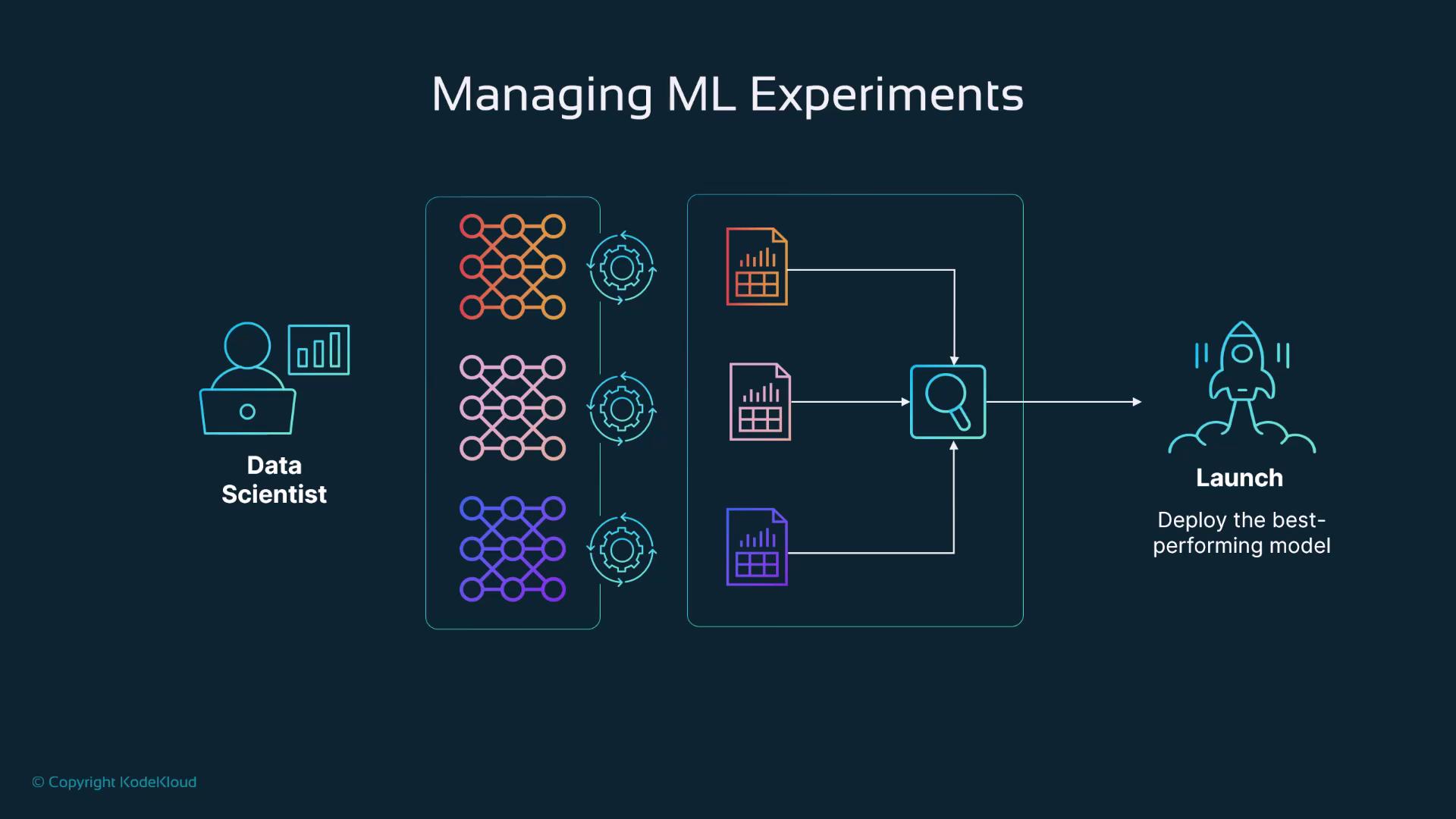Fundamentals of MLOps
Model Development and Training
Introduction to MLflow
Welcome to this comprehensive lesson on MLflow, an essential platform for managing the complete lifecycle of machine learning projects. MLflow streamlines processes from experimentation to model deployment, making it a critical tool for data scientists and machine learning engineers.
The Model Development Lifecycle
Machine learning projects follow an iterative process. Initially, data scientists determine which model best fits their use case and then run a series of experiments. During this phase, various models are tested on similar datasets, and their performance is compared to identify the most promising candidate. Experimentation is vital because each use case may require a different model. Once the optimal model is selected, it is deployed into production, and visualizing the data becomes crucial to determine which model delivers the best results.

Note
MLflow is specifically designed to simplify this iterative process by providing tools for tracking, packaging, and deploying your models with ease.
What is MLflow?
MLflow is an open-source platform that helps manage every phase of a machine learning project. With its modular framework, MLflow enables you to track experiments, package code into reproducible projects, standardize model deployments, and manage model versions—all essential for scaling and maintaining high-quality models.
Let’s break down MLflow’s key components and explore how they can streamline your work, using the example of predicting house prices based on historical data.
MLflow Components
Tracking
MLflow Tracking is the module responsible for logging comprehensive details of your experiments. For a house price prediction project, you can record hyperparameters like learning rate and batch size, as well as important performance metrics such as accuracy. This detailed logging makes it easy to compare experiments and identify the most successful model.
Projects
MLflow Projects help you standardize your machine learning code by packaging it in a reusable and defined format. For example, you can configure your model training pipeline and list dependencies in an MLproject file. This standardization simplifies reproducibility, allowing collaborators to run experiments on different machines with minimal setup.
Models
The Models component standardizes how machine learning models are saved and deployed. Once your ideal model is established, you can save it in MLflow’s format and deploy it across various environments, such as Flask, FastAPI, or BentoML. This uniform approach ensures seamless integration into different deployment platforms.
Model Registry
The Model Registry acts as a control center for managing multiple versions of your models. In our house price prediction scenario, it allows you to track various model versions, designate production-ready models, and archive outdated versions. Think of the Model Registry as similar to a Docker registry, where version control and history are maintained effectively.
![]()
Why Use MLflow?
The integration of Tracking, Projects, Models, and the Model Registry addresses the common challenges in model development and management. By providing a unified toolset, MLflow not only simplifies experiment tracking but also enhances reproducibility and scalability across the machine learning lifecycle.
Important
Before deploying your model into production, ensure that all experiments have been thoroughly documented and evaluated. This practice is crucial to prevent deploying ineffective models.
Next Steps
In the upcoming lesson, we will dive deeper into setting up MLflow. You will learn how to run experiments, store results, and utilize MLflow's capabilities to streamline your machine learning workflow.
Thank you for reading this introduction. Continue exploring to harness the full potential of MLflow for managing your machine learning projects.
Watch Video
Watch video content